Ground cover are small, carpeting plants for the foreground of an aquarium or aquascape. By now, many different types with different shades, leaf shapes and demands are commercially available. Small-leaved plants like Hemianthus callitrichoides "Cuba" or Glossostigma elatinoides, are very popular and support the landscape ambitions in an aquascape. Types that are more gramineous in their habit, like Eleocharis parvula or Lilaeopsis brasiliensis are captivating due to their thin, stalk-like leaves. Marsilea, which is reminescent of clover with its dark-green leaf shape, is pretty undemanding.
The mixing of various sorts of ground-cover creates a natural, wild look, but such a mixture is harder to maintain in the long run. For long-lasting layouts, the use of small, solitary plants is recommended, like the low growing Cryptocorynen. The placing of smaller hardscape elements like fragments of stones or driftwood loosens up the look of a ground cover surface in a natural way.
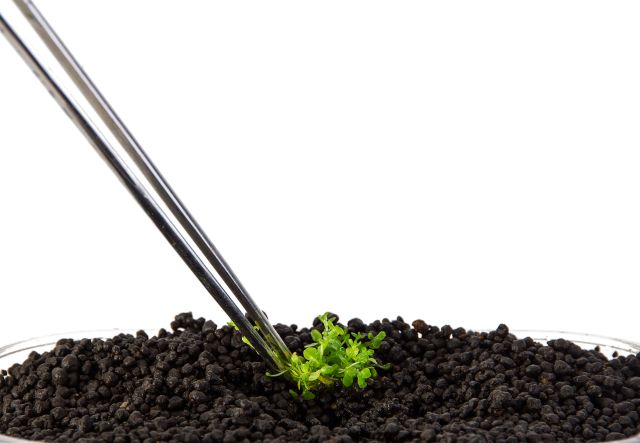
For the planting of the small ground covers, a pair of tweezers of an appropriate size work splendidly.
You can read up on how to properly plant ground cover here.
Species overview of popular ground covers
Hemianthus callitrichoides "Cuba"
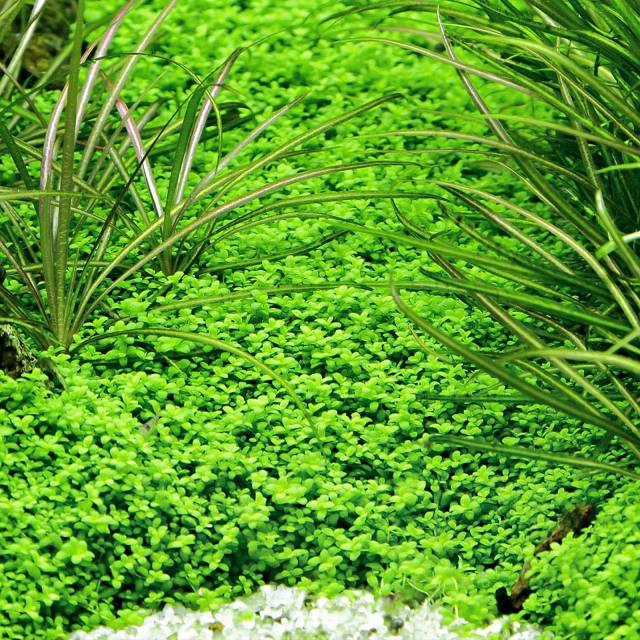
Das Dwarf baby tears is often referred to as the smalles aquarium plant in the world. Its leaves are light green and round. The plant has a creeping habit. With enough light and nutrients the Dwarf Baby Tears live up to their name and small oxygen bubbles will form on their leaves and rise to the surface.
- Genus: Hemianthus
- DIfficulty: medium
- Growth rate: medium
- Temperature tolerance: 18 - 28°C
- Has an emerged form : yes
Glossostigma elatinoides
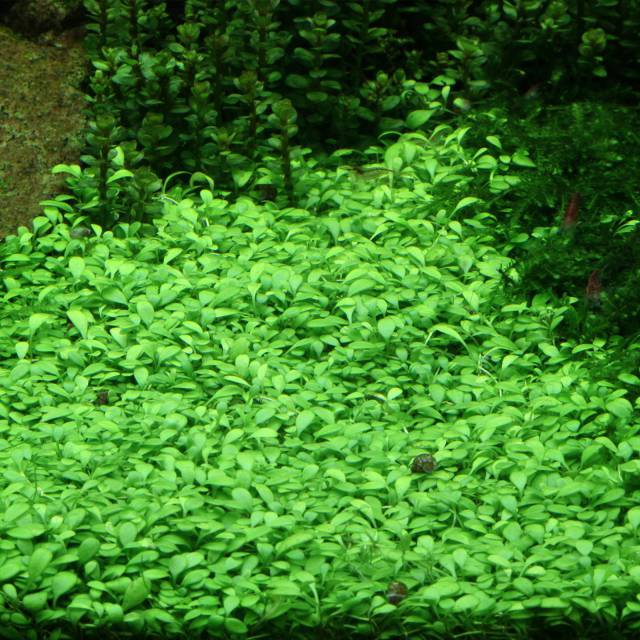
The tongue-shaped stigma is, good nutritional conditions provided, a very fast growing foreground plant. Its leaves are light green and drop-shaped. Especially in the beginning, the plant tends to grow upward. Regular trimming forces glossostigma into a creeping habit.
- Genus: Glossostigma
- Difficulty: medium
- Growth rate: fast
- Temperature toleranz: 4 - 30°C
- Has an emerged form: yes
Micranthemum sp. "Montecarlo-3"
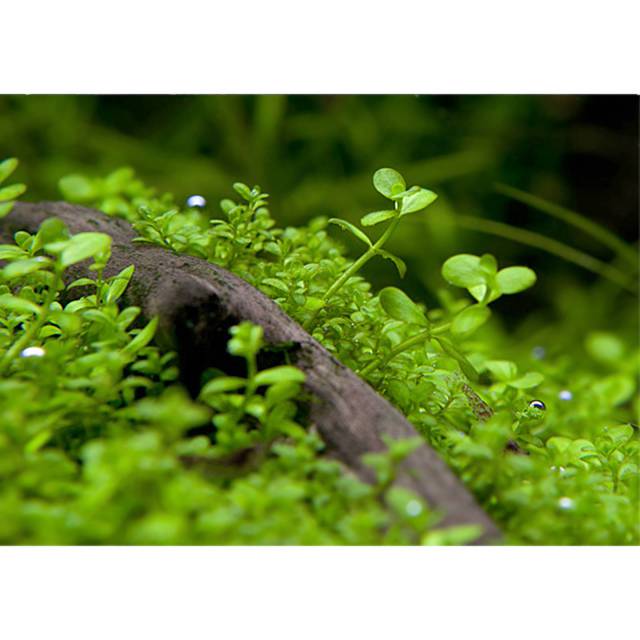
Under the abbreviation "MMC" this plant has grown in popularity over the recent years. It is similar to "HCC" (Hemianthus callitrichoides "Cuba") as far as the looks are concerned, but it has much bigger leaves. It is also less demanding and thus great for beginners.
- Genus: Micranthemum
- DIfficulty: easy
- Growth rate: medium
- Temperatur tolerance: unknown
- Has an emerged form: yes
Eleocharis sp. 'Mini'
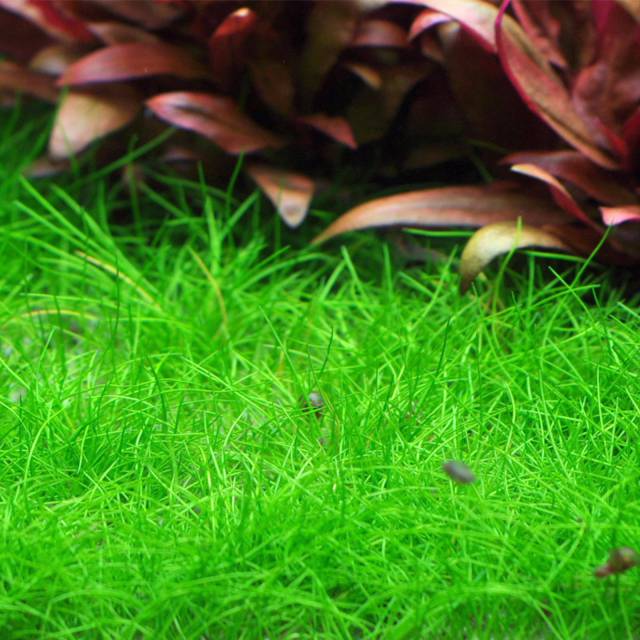
For a lawn-like carpet, this ground cover is the way to go. The plant is robust and not as fast growing and therefore less maintenance intensive. It procreates via stolons. The thin blades of Eleocharis sp. 'Mini' are of a bright green colour.
- Genus: Eleocharis
- DIfficulty: easy
- Growth rate: medium
- Temperature tolerance: 18 - 27°C
- Has an emerged form: yes
Marsilea hirsuta
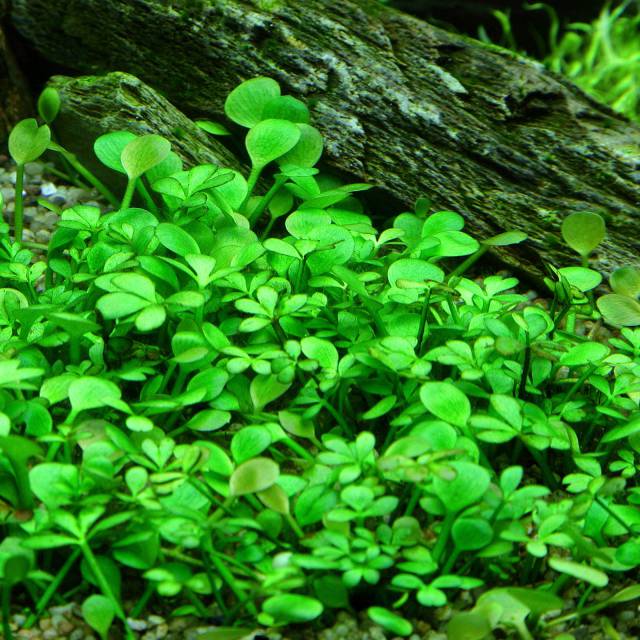
The rough water clover is a rather undemanding, ponderously growing ground cover. The dark-green leaves may vary in shape, from drop-ish to cloverleaf-like. Under insufficient lighting conditions, Marsilea can grow very high. A smaller variant is available with the Marsilea crenata, which comes into its own especially in nano aquaria.
- Genus: Marsilea
- DIfficulty: easy
- Growth rate: medium
- Temperature tolerance: unknown
- Has an emerged form: yes
Care
Fast-growing ground cover such as Glossostigma elatinoides, but also Hemianthus callitrichoides "Cuba" should regularly be trimmed down to just a few centimeters using suitable plant scissors, or else there will be the risk of lower plant parts dying off or losing grip when the growth is too high. The bitter consequences will be whole pads floating up to the surface and having to re-plant everything. Spring scissors like the Aqua Rebell Spring Scissors are great for working in smaller tanks. For bigger tanks (60cm edge upwards) we recommend using wave scissors.
A good nutritional supply with light, carbon and fertilizer is vital to the growth and health of the plants but should always be tailored to the plants’ individual needs. Here you can orient yourself using the traffic light system of common garden centers (green = simple, yellow = moderate, red = demanding). Ground cover benefit from a high-nutrition substrate like soil.